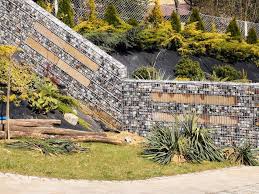Building with gabions might seem uncomplicated at first glance, but understanding the art of gabion construction demands focus on fine detail, proper planning, and adherence to finest practices. In this article, we’ll discover useful strategies for reaching profitable gabions (gabiony) installations and making the most of the functionality and durability of the buildings.
1. Site Analysis and Preparing:
Before you start a gabions (gabiony) design venture, carry out a complete site evaluation to determine prospective difficulties and options. Think about aspects like soil situations, drainage styles, and enviromentally friendly polices. Remove the construction website of crops, dirt, and obstructions, and be sure that the ground is levels and dependable to supply a firm foundation for your gabion components.
2. Materials Choice and Locating:
The success of a gabion project hinges on the standard of materials employed. Choose tough cable fine mesh and rust-resilient stainlesss steel for your gabion baskets to make certain long-term architectural integrity. When selecting rock fillings, choose locally sourced resources that happen to be well-designed for the task demands and ecological situations. Avoid using stones with distinct sides, as they are able injury the wire mesh and affect the steadiness of the gabions.
3. Assembly Techniques and Development Techniques:
Suitable assemblage of gabion baskets is critical to achieving a strong and secure composition. Start with laying out of the cable fine mesh individual panels on the level surface and securely fastening the sides utilizing wire ties or hog jewelry. Fill up the gabion baskets with gemstone teeth fillings consistently, compacting these to achieve greatest occurrence and steadiness. Use a combination of fingers packing and technical compaction strategies to ensure consistent satisfying and reduce voids inside the gabion structure.
4. Installment and Location Things to consider:
During set up, be aware of suitable positioning and positioning of the gabion baskets to guarantee structural reliability and stability. Stack the gabions in the staggered design to generate a dependable interlocking structure, and utilize geotextile cloth like a coating to prevent garden soil damage and promote water flow. Integrate proper anchoring strategies, including burying the lowermost gabion covering or using terrain stakes, to safe the structure in position.
5. Continuing Routine maintenance and Checking:
Normal upkeep is important to prolong the life-span of gabion structures and make certain their continued usefulness. Examine the gabions occasionally for signs of injury, such as corrosion, bulging, or resolution, and repair any concerns promptly to prevent additional degeneration. Remove dirt, crops, and sediment accumulation in the top of the gabions to preserve best discharge and architectural sincerity.
In summary, mastering the skill of developing with gabions demands meticulous planning, focus to fine detail, and adherence to best practices. By simply following practical techniques and strategies for web site assessment, material choice, construction, set up, and maintenance, development specialists can obtain effective gabion installs that deliver extended-lasting performance and durability in a range of apps.


